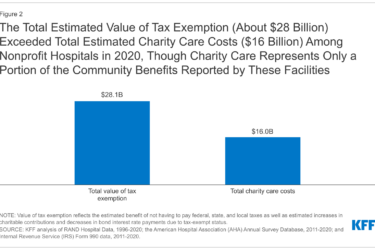
Oral health may be essential to overall health but the enduring gap between dental care and medical care impacts everything from how care is accessed to how services are financed, from how providers are educated to how research is pursued.
For millions of Americans, dental care is harder to find and pay for than medical care. Physicians and dentists operate in separate systems and oral and medical services are rarely integrated.
The dental-medical divide is not only formidable it “has significant consequences for patients and is entirely of our own making,” noted Health Affairs editor-in-chief Alan R. Weil in an introduction to the journal’s December issue.
“Like so many health care challenges, naming it is a useful first step, but much more is required to generate change on the scale that is needed,” Weil observed.
At a Dec. 7 briefing in Washington, D.C., contributors to the new issue offered insights. Insurance reform, workforce and safety net expansion, interprofessional training, the strengthening of access under Medicaid and the inclusion of dental benefits under Medicare could all potentially help to bridge the divide, they suggested in comments and in papers included in the journal.
“Dental care is an outlier compared to all other health care services,” said Marko Vujicic, chief economist at the American Dental Association’s Health Policy Institute. Dental benefits are bought and sold separately from health insurance and roughly one third of Americans lack them. Cost remains a major barrier to dental care, said Vujicic who called for “fundamentally re-designing” dental coverage.
For the uninsured and underinsured, dental care can be harder to find than medical care. Oral health services can also be harder to find in rural and poor communities. Many safety net clinics that offer medical care in these places still lack dental providers. Technically-trained dental therapists could help answer the need, said Jane Koppelman, research director for the Pew Charitable Trusts’ dental campaign.
“In medical-dental integration, when that is done on the grassroots level, we think of locating dental providers in medical offices,” she said.
Margaret Langelier, executive director of the State University of New York’s Oral Health Workforce Research Center said dental hygienists who are permitted a wide scope of practice could also help bridge the gap between dental and medical care.
“Placing dental hygienists in public health settings may have a long-term impact,” Langelier said.
While progress has been made, thanks to measures including water fluoridation and prevention efforts, tooth decay remains the most common chronic disease of childhood, other speakers noted .
Dental utilization rates among child Medicaid beneficiaries have improved in recent years, but child beneficiaries still suffer worse oral health than privately insured children, said Columbia University researcher Jaffer Shariff. “The dental care delivery system might not be sufficient,” he noted.
There are other problems as well. Physicians and dentists learn in separate schools and keep separate records. Dental benefits have not been fully incorporated into the nation’s health care reform law and their purchase is not mandated. Medicaid dental benefits are not guaranteed to poor adults and vary from state to state. Medicare does not currently cover routine dental benefits for more than 50 million elderly and disabled Americans.
Since sweeping the November elections, Republican promises to dismantle the Affordable Care Act (ACA) and re-engineer Medicare and Medicaid have worried many defenders of the programs.
Yet perhaps, amid the changes that the future holds, there will be opportunities to bridge the enduring dental-medical divide in systems and institutions, said University of Maryland School of Dentistry Professor Richard Manski.
He urged oral health advocates to think creatively and optimistically.
“How do we begin a new conversation?” he asked. “How do we advocate for the things we want – more integrated teaching? More integrated care?”









